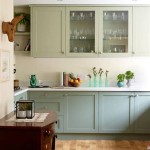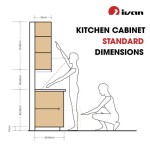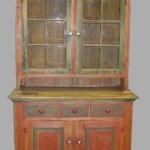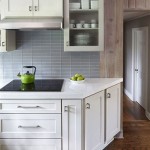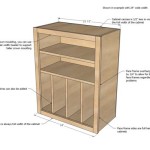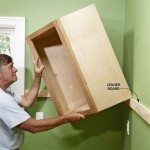Wood Contact Paper Kitchen Cabinet Doors: A Comprehensive Guide
Kitchen cabinet doors are a significant component of the overall aesthetic and functionality of a kitchen. Replacing them can be a costly and time-consuming undertaking. An alternative to complete replacement is the application of wood contact paper. This method provides a cost-effective and relatively simple way to update the appearance of kitchen cabinets, offering a simulated wood grain finish without the expense of solid wood construction. This document provides a comprehensive overview of wood contact paper for kitchen cabinet doors, encompassing materials, application techniques, potential benefits, and drawbacks.
Understanding Wood Contact Paper
Wood contact paper, also known as self-adhesive vinyl film, is a thin, flexible material with a printed wood grain pattern on one side and an adhesive backing on the other. It is typically available in rolls or sheets and comes in a wide variety of wood grain patterns, colors, and textures. Some contact papers even feature a slightly raised texture to more closely mimic the feel of real wood. The quality of the adhesive and the durability of the printed wood grain vary depending on the manufacturer and the price point.
The material composition of wood contact paper typically consists of a vinyl or PVC (polyvinyl chloride) base layer. This layer provides the necessary flexibility and water resistance for application in a kitchen environment. The printed wood grain pattern is applied to the surface of the vinyl, often using high-resolution printing techniques to achieve a realistic appearance. A clear protective layer is then applied over the wood grain pattern to protect it from scratches, fading, and other forms of damage. The adhesive backing is usually a pressure-sensitive adhesive, allowing the contact paper to be easily applied and repositioned during the installation process.
The primary advantage of wood contact paper lies in its cost-effectiveness. Compared to purchasing new cabinet doors or refinishing existing ones with paint or stain, applying contact paper is significantly cheaper. It also requires minimal tools and expertise, making it a suitable option for do-it-yourself (DIY) projects. Furthermore, the wide variety of wood grain patterns available allows for a high degree of customization, enabling homeowners to achieve their desired aesthetic without incurring substantial costs.
However, it is crucial to acknowledge the limitations of wood contact paper. While it can effectively simulate the appearance of wood, it lacks the inherent qualities of solid wood, such as its durability, texture, and natural warmth. Contact paper is also susceptible to damage from heat, moisture, and abrasion. Over time, it may peel, bubble, or fade, requiring replacement. Therefore, it is essential to consider these factors before opting for wood contact paper as a long-term solution for updating kitchen cabinet doors.
Preparing for Application: Tools and Procedures
Proper preparation is paramount to achieving a professional-looking finish when applying wood contact paper to kitchen cabinet doors. Failure to adequately prepare the surface can result in poor adhesion, bubbles, and wrinkles. The following steps outline the necessary tools and procedures for preparing the cabinet doors:
Tools Required:
- Cleaning Supplies: Mild detergent, warm water, a clean cloth or sponge, and degreaser (if necessary).
- Measuring Tools: Measuring tape, ruler, or straight edge.
- Cutting Tools: Sharp utility knife or scissors.
- Application Tools: Smoothing tool (squeegee or plastic card), soft cloth, and heat gun or hairdryer (optional).
- Safety Gear: Safety glasses and gloves.
Preparation Procedures:
1. Removing Cabinet Doors and Hardware: Begin by carefully removing the cabinet doors from their hinges. Label each door and its corresponding hinge location to ensure proper reinstallation. Remove all hardware, such as knobs, pulls, and handles. Store the hardware safely to prevent loss or damage.
2. Cleaning and Degreasing: Thoroughly clean the surface of the cabinet doors with a mild detergent and warm water. Remove any grease, dirt, or grime that may impede adhesion. If necessary, use a degreaser to remove stubborn grease stains. Rinse the doors with clean water and allow them to dry completely.
3. Sanding (Optional): If the cabinet doors have a glossy or uneven surface, lightly sanding them with fine-grit sandpaper can improve adhesion. Sanding creates a slightly textured surface that allows the adhesive to grip more effectively. After sanding, wipe the doors clean with a damp cloth to remove any sanding dust.
4. Filling Imperfections (Optional): Any dents, scratches, or imperfections on the surface of the cabinet doors should be filled with wood filler. Allow the wood filler to dry completely and then sand it smooth to create a level surface. This step is crucial for achieving a smooth and uniform finish.
5. Priming (Optional): Applying a primer to the cabinet doors can further enhance adhesion, especially if the doors are made of a porous material such as MDF (medium-density fiberboard). Choose a primer that is compatible with vinyl and allow it to dry completely before applying the contact paper.
6. Measuring and Cutting: Carefully measure the dimensions of each cabinet door. Add a few extra inches to each measurement to allow for trimming and adjustments. Transfer the measurements to the contact paper and use a sharp utility knife or scissors to cut out the pieces. It is advisable to cut the pieces slightly larger than needed to ensure complete coverage.
Applying Wood Contact Paper: Step-by-Step Guide
The application process requires patience and attention to detail to avoid bubbles, wrinkles, and misalignments. The following steps provide a comprehensive guide to applying wood contact paper to kitchen cabinet doors:
1. Peeling the Backing: Gently peel away a small portion of the backing paper from the contact paper, starting at one corner. Avoid peeling the entire backing at once, as this can make the contact paper difficult to handle and increase the risk of wrinkles.
2. Aligning and Positioning: Carefully align the exposed edge of the contact paper with the edge of the cabinet door. Ensure that the wood grain pattern is oriented correctly. Slowly lower the contact paper onto the surface of the door, working from one edge to the other.
3. Smoothing and Adhering: Use a smoothing tool, such as a squeegee or plastic card, to smooth the contact paper onto the surface of the door. Work from the center outwards, applying firm and even pressure. This will help to remove any air bubbles and ensure that the contact paper adheres properly to the surface.
4. Removing Bubbles: If air bubbles appear, use a pin or needle to puncture them and then smooth the contact paper over the punctured area. Alternatively, a heat gun or hairdryer can be used to gently heat the contact paper, making it more pliable and easier to smooth out. Be careful not to overheat the contact paper, as this can damage the adhesive.
5. Trimming Excess Material: Once the contact paper is fully adhered to the surface of the cabinet door, use a sharp utility knife to trim away any excess material around the edges. Run the knife along the edges of the door, using a straight edge as a guide to ensure a clean and precise cut. Be careful not to scratch the surface of the cabinet door.
6. Folding and Adhering Edges (Optional): For a more professional finish, the edges of the contact paper can be folded over the edges of the cabinet door and adhered to the back. This creates a seamless look and prevents the edges from peeling up over time. To do this, carefully fold the excess material over the edges of the door and use a smoothing tool to adhere it to the back.
7. Reinstalling Hardware and Doors: After the contact paper has been applied to all of the cabinet doors, reinstall the hardware, such as knobs, pulls, and handles. Carefully align the hardware with the pre-existing holes and tighten the screws securely. Finally, reinstall the cabinet doors onto their hinges, ensuring that they are properly aligned and functioning smoothly.
Wood contact paper offers a viable option for updating kitchen cabinet doors. However, surface preparation, meticulous application, and realistic expectations are critical for achieving satisfactory results. While not a substitute for solid wood, it provides an economical and aesthetically pleasing alternative.

Spruce Up The Outside Of Your Kitchen Cabinets With Contact Paper Offbeat Home Life

Self Adhesive Wallpaper Waterproof Wood Vinyl Roll Contact Paper Doors Cabinet

Spruce Up The Outside Of Your Kitchen Cabinets With Contact Paper Offbeat Home Life Diy Makeover

How To Update Cabinets With Contact Paper The Handyman S Daughter

How To Make Over A Kitchen With Contact Paper Covering Cabinets Countertops And Appliances

L Stick Wood Cabinets Er Friendly

F U Faux Wood Grain Wall Paper Self Adhesive Vinyl Shelf Liner Covering For Kitchen Countertop Cabinets Drawer Furniture Decal 23 4 Wx117 L White Silver Cover Wallpaper

Livelynine 200x36 Inch Large Wood Countertop Contact Paper Waterproof Kitchen Cabinet Wallpaper L And Stick Vinyl Furniture Pine Grain Wrap Desk Doors Table Cover Com

When Your Landlord Says Paint Is Out Of The Question Try Contact Paper For Cabinets Domino

Tips For Decorating The Bathroom In A Al House Decor Home Diy

